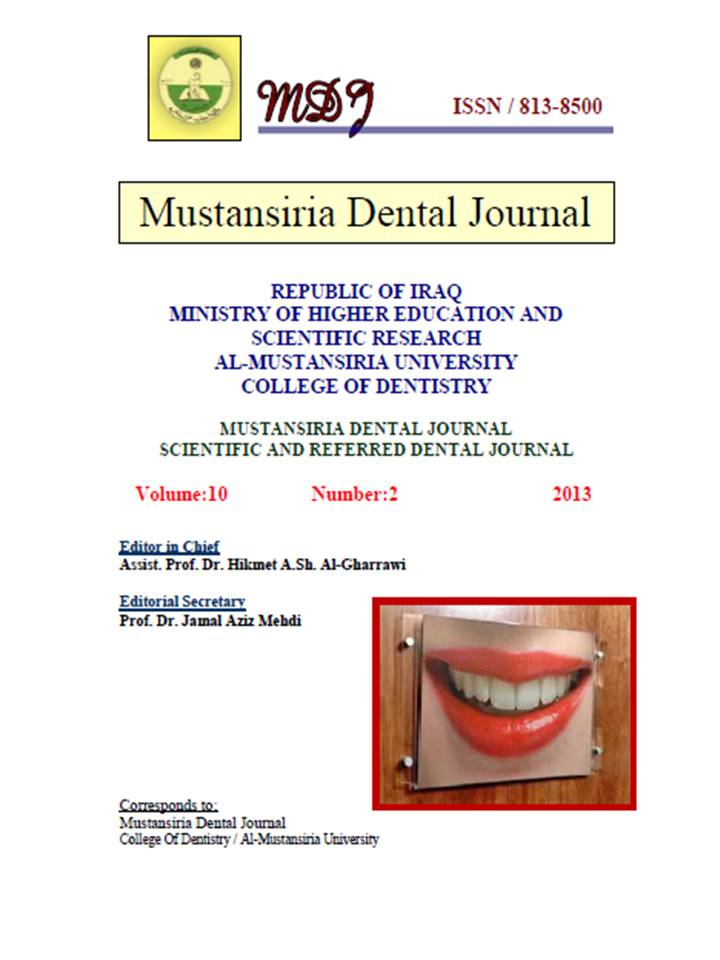Clinical assessment of position of impacted lower third molars and their indications for extraction
DOI:
https://doi.org/10.32828/mdj.v10i2.225Keywords:
Keyword: Surgical extraction of impacted lower 3rd molar, lower 3rd molar impaction. Complication of extraction.Abstract
The purpose of this study was to assess the position of impacted lower third
molars, the indications for extraction, and the post-operative complications. Records
of patients who attended Misan general hospital between March 2008 and April 2009
for surgical removal of mandibular third molars.
The angulation type and depth of impaction were determined by reviewing the
orthopantomograms. A total of 140 impacted teeth were surgically extracted from 132
patients (69 males, 63 females). The reasons for extraction include recurrent
pericoronitis (55%) followed by caries (25%) and prophylactic purposes (20%).
Mesioangular impactions accounted for (49.29 %) and Level 1 position of
impaction accounted for (65%) of extractions. 40 complications (28.57%), including
persistent pain and swelling, infection, dry socket, Trismus and ulceration were
reported . Persistent pain and swelling was the most common complications followed
by infection.
There was no significant relationship between the angulation, level of impaction
and the occurrence of complications. Mesioangular type and Level A position of
impaction were the most common impaction. Although the association was not
significant, high frequency of post-operative complications was observed in
mesioangular, horizontal and level A position of impaction.

Downloads
Published
Issue
Section
License
The Journal of Mustansiria Dental Journal is an open-access journal that all contents are free of charge. Articles of this journal are licensed under the terms of the Creative Commons Attribution International Public License CC-BY 4.0 (https://creativecommons.org/licenses/by/4.0/legalcode) that licensees are unrestrictly allowed to search, download, share, distribute, print, or link to the full texts of the articles, crawl them for indexing and reproduce any medium of the articles provided that they give the author(s) proper credits (citation). The journal allows the author(s) to retain the copyright of their published article.
Creative Commons-Attribution (BY)








